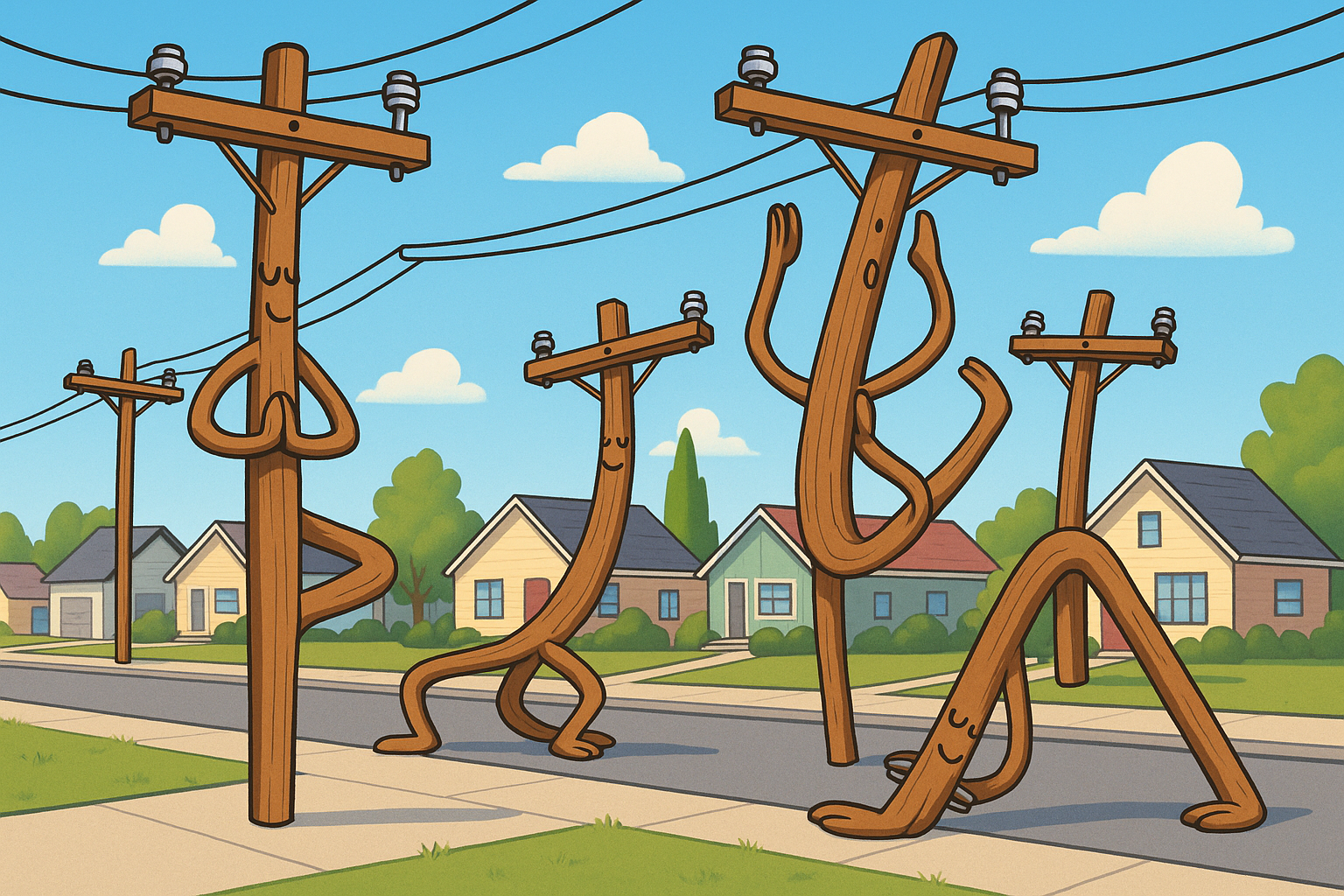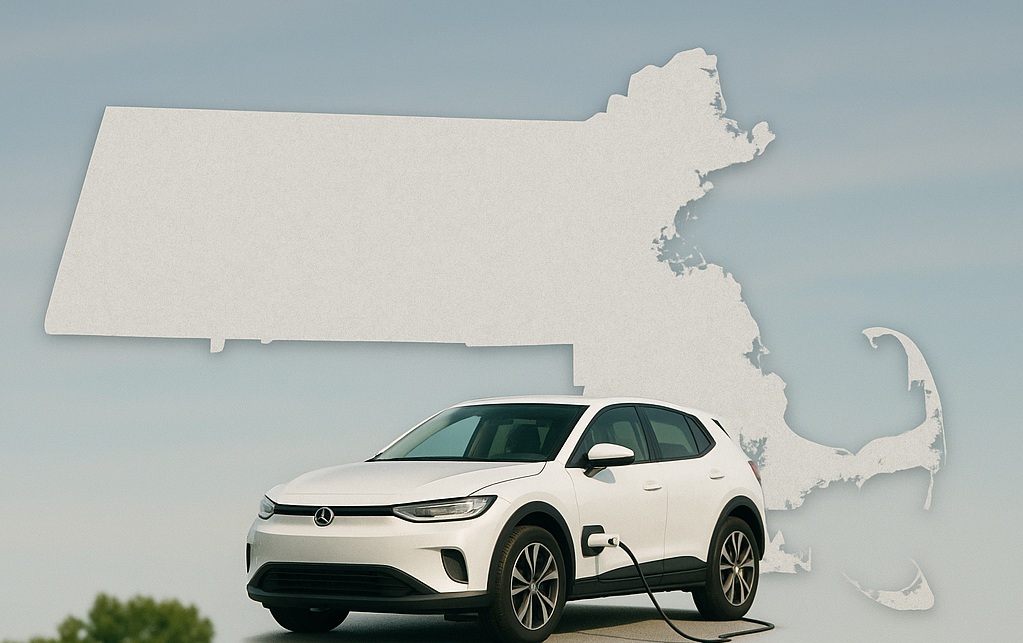
The last decade was about proving V2G works. The next will be about removing the barriers that keep it from scaling. Two feature articles in this edition capture that shift: flexible grid connections, which turn “no” into “yes, if” for V2G projects, and Massachusetts’ V2X pilot, which tests how cars can power more than just mobility. Both point to the same conclusion: the grid of the future won’t be rigid. It will be adaptive, dynamic, and powered in part by the vehicles in our driveways.
And, true to our mission, we’re bringing you all the hot stories in this space—including China’s bold national commitment to bidirectional charging and V2G, a policy move that sets a new global benchmark for V2G deployment at scale.

V2G Insights
Why Flexible Grid Connections Are Key to V2G

A fleet operator wants to install 50 bidirectional EV chargers—not just to charge vehicles, but to send power back to the building and grid during peak hours. The utility reviews both sides of the request: the service connection to draw power, and the interconnection to export it. The verdict: wait three years for a $2 million transformer upgrade! This has been a real challenge for V2G projects, slowing both electrification and the grid services and resiliency these systems could provide. But there’s a better way forward—one that’s already taking shape in leading states and utility territories.
The Grid Connections Dilemma
As vehicle-to-grid (V2G) technology edges closer to mainstream adoption, one of the least understood hurdles is grid connection—which has two sides: service connections for imports (when a customer or DER draws electricity from the grid) and interconnections for exports (when a DER sends power back). These rules of the road determine how distributed energy resources (DERs)—from rooftop solar to battery storage to bidirectional EVs—connect safely and reliably. For V2G in particular, they govern not just whether a car can charge, but whether it can legally and technically discharge energy back to buildings and the grid.
For decades, both imports and exports have been treated rigidly. Utilities typically assume that a project might operate at full capacity during the most constrained hours of the year—whether that’s peak demand, when feeders are stressed by heavy customer loads, or minimum demand, when excess generation risks backfeeding through substations and creating voltage or protection issues. If either scenario could pose a problem, the project is often told to wait—sometimes for years—until costly upgrades are built.
This worst-case planning approach wasn’t simply conservative—it reflected a fundamental reality of traditional grid operations: utilities had virtually no control over how customers used electricity. They had to build infrastructure capable of handling everything that might be needed, whenever it might be needed, because customers could turn on any appliance at any time. While load diversity calculations allowed some statistical refinement, and utilities could offer price signals through rate structures to encourage off-peak usage, these remained just that—signals that customers were free to ignore. Without direct control over loads, planning for the worst-case scenario (often with an additional buffer) was the only way to ensure reliability.
Note: The author would like to thank Jackie Piero, US Head of Policy & Regulatory at the Mobility House, for her review and helpful comments on an early draft. Any remaining errors or omissions are the sole responsibility of the author.

V2G Intelligence
The Biggest Test Yet: Massachusetts Scales Up Bidirectional Charging

Massachusetts is turning vehicle-to-grid technology from promise into practice. The state’s V2X Demonstration Program, launched earlier this year by the Massachusetts Clean Energy Center (MassCEC), has entered its installation phase—and it represents the most comprehensive test of bidirectional charging as a grid resource in the United States.
Over the next year, the program will deploy up to 100 bidirectional chargers across residential, commercial, and school district sites. Installations are expected to be completed by September 2026, with data collection continuing through the end of that year. The findings will be compiled into a public V2X Guidebook, providing lessons learned to inform future utility programs and policy design nationwide.
How the Program Works
The program is funded at $6.3 million (within a larger federal EV infrastructure award). MassCEC is working with The Mobility House, Resource Innovations, B2Q, Voltrek, and others to activate EVs as storage assets totaling roughly 1.5 MW of flexible capacity.

V2G Finds
China Declares V2G a Core Strategy for Its Energy Future
At the Chongqing Energy Storage and Smart Energy Industry Development Summit, leading scientist Ouyang Minggao announced that 2025 marks the beginning of vehicle-to-grid (V2G) integration as a central pillar of China’s distributed energy storage strategy. With projections of 350 million EVs on the road by 2050, China sees V2G not just as a way to stabilize the grid during solar surges and peak demand, but also as a massive economic opportunity for EV owners—potentially earning thousands of dollars annually from energy arbitrage. By positioning EVs as the world’s largest short-term energy storage system, China is signaling a long-term commitment to V2G as both an energy and industrial policy priority.
The contrast with the United States is stark. While China implements national V2G mandates and coordinates deployment across its energy system, US federal support for EVs has weakened under the current administration, with tax credit rollbacks and reduced infrastructure funding slowing the momentum built over the past decade. The risk is clear: the country that pioneered many V2G technologies and demonstrated their viability could cede global leadership to a nation making it a strategic priority. As China integrates hundreds of millions of EVs into its grid infrastructure, the US faces a choice about whether V2G remains a niche pilot program or becomes a cornerstone of its own clean energy transition.
9/28/2025
Vehicle-to-Grid Is Finally Here—So Why Isn’t It Scaling Faster?
Inside Climate News reporter Dan Gearino explores the slow but steady progress of vehicle-to-grid (V2G) technology, highlighting Sunrun’s Maryland pilot with Ford F-150 Lightnings and new consumer programs emerging in Europe. The article revisits the foundational 1997 paper “Electric Vehicles as a New Power Source for Electric Utilities,” co-authored by Willett Kempton and Steve Letendre—now founder of V2G News—that first outlined how electric vehicles could act as grid resources. Nearly three decades later, that vision is starting to materialize, but Gearino points to several reasons scale has lagged: fragmented technical standards, a lack of coordination among automakers, utilities, and regulators, and the persistence of small pilot projects rather than large-scale rollouts. With bidirectional capability now common in new EVs and state policies emerging to support grid integration, he concludes that V2G is finally on the cusp of broader adoption—if stakeholders can move beyond pilots and start building programs at scale.
10/2/2025
Rivian Patents Home Energy Storage System with Grid Interface
Rivian has filed a USPTO patent for a stationary energy storage system designed to store energy from the grid, solar panels, or an EV, and deliver power back to a home or remote site. While the filing primarily describes a home battery—akin to Tesla’s Powerwall or GM Energy’s Ultium Home—it includes provisions for grid interaction and vehicle association, hinting at Rivian’s ambition to develop a broader V2X ecosystem.
As we noted in our feature “Mapping the Innovation Landscape: What V2G Patents Tell Us About the Technology’s Trajectory” (V2G News, Vol. 1 | Issue 2), patent activity offers a clear window into how automakers and tech firms are positioning themselves in the transition from concept to commercialization. Rivian’s move into stationary storage underscores how intellectual property strategy is becoming a key signal of competitive intent in the V2G and V2X space.
9/30/2025
Taiga Brings V2G to the Water
Canadian startup Taiga Motors has unveiled its 2026 Orca electric watercraft lineup, with all models now featuring bidirectional charging. The Orca WX3 and Orca P2 can not only deliver high-performance ride experiences but also discharge power to support a home during an outage, recharge dockside equipment, or supply energy to off-grid cabins and marine loads. Starting in 2026, all Orca vehicles will support CCS fast charging, enabling them to use the same infrastructure as EVs on the road.
While still a niche application, Taiga’s move illustrates how vehicle-to-grid concepts are spreading beyond passenger cars and trucks to other platforms. From school buses to boats, the principle is the same: mobile batteries can provide flexible, distributed energy services to the grid and to end users.
9/26/2025
Can Your EV Power Your Home?
The most common V2X question has a clearer answer every month: yes — if you have the right vehicle and hardware. In a recent feature in Electrek that highlights what works today, we see how models like Ford’s Lightning, Kia’s EV9, GM’s Ultium lineup, and Honda’s upcoming Acura RSX are bringing bidirectional capability to market. Third-party solutions like Sigenergy are also expanding options for Tesla, Kia, Volvo, and VW/Audi drivers.
Consumer adoption of V2H is growing, and with it comes pressure on utilities and regulators to streamline interconnection and recognize these vehicles as true grid assets.
9/28/2025
BGE and Sunrun Launch Nation’s First Residential V2G Power Plant
Baltimore Gas & Electric (BGE) and Sunrun have activated what they describe as the nation’s first residential vehicle-to-grid distributed power plant. Using Ford F-150 Lightning trucks and Sunrun’s Home Integration System, three households exported stored energy to the grid during evening peak hours this summer, earning participants up to $1,000 for the season. The pilot builds on an earlier vehicle-to-home program and marks a notable step toward integrating residential EVs into utility operations.
9/26/2025
Australia’s “V2G Moment”: Utilities Race to Unlock the Car-to-Grid Economy
Australia’s leading energy retailers—Amber, AGL, and Origin—are launching large-scale vehicle-to-grid (V2G) trials that could bring bidirectional charging into hundreds of homes by 2026. Backed by the Australian Renewable Energy Agency, these programs test the commercial models and automaker partnerships needed to move V2G from pilot to product. Amber CEO Dan Adams calls this “a mythical technology finally made real,” as early participants earn $2,000–$3,000 annually selling energy back to the grid. For V2G News readers, this marks a global inflection point: mainstream energy suppliers are beginning to compete on V2G-enabled retail offerings—an early signal of how the technology could scale commercially well beyond Australia.
10/5/2025